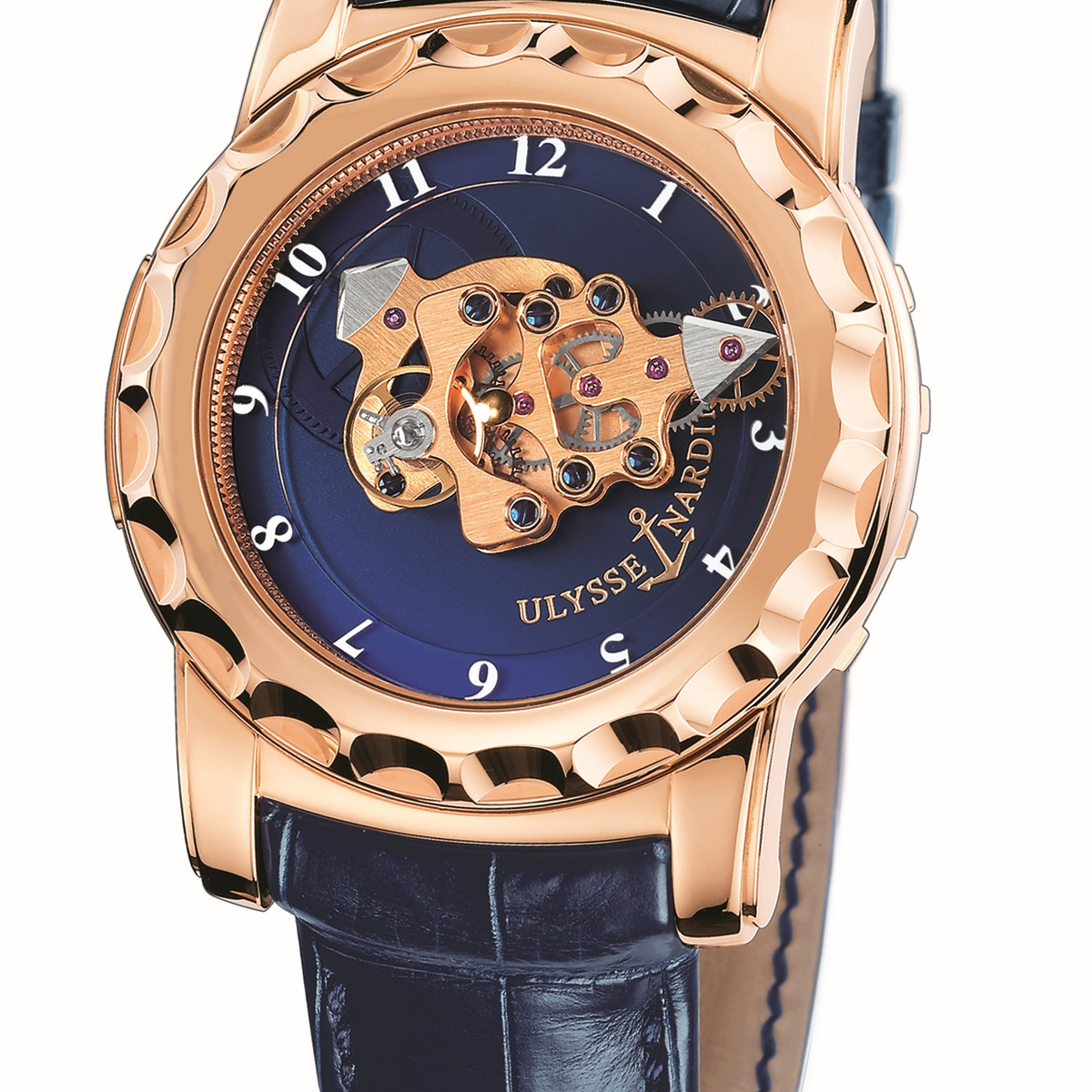Launch Year
2001
Functions
hours, minutes, karussel tourbillon
Movement
mechanical manual-winding, seven-day power reserve
Distinctive features
baguette-type movement with karussel tourbillon spinning on one axis, no dial, time-setting via the upper bezel, winding via the lower bezel
Presented in 2001 at the initiative of Rolf W. Schnyder and Ludwig Oechslin, the Freak reduced the watch to a remarkably pared-down expression: no hands, no dial and no crown. Indications are displayed directly by the movement, housed in a container with sapphire crystals above and below. To replace the hands and dial, two arrow-tipped bridges rotate in one hour and twelve hours respectively, pointing to numerals on an internal plate. The main case interacts with the movement to play the role of the crown. The upper bezel, which is released by a pawl at 6 o'clock, is used to set the time; while its counterpart, on the caseback, serves to wind the long mainspring. As its name suggests, this Freak is a phenomenon or curiosity, but in the noble sense. There is nothing extravagant about this creation, which harbours first-class technological advances.
As it sweeps around the dial, the openwork minutes hand/movement bridge carries with it most of the movement's components and, in particular, a revolutionary control system that is disconcertingly simple and requires no lubrication. This results in long-term reliability and significantly longer intervals between revisions. It all began with a double escapement made of silicon. Ulysse Nardin was the first watchmaker to take advantage of the extraordinary properties of this material in the heart of a watch. Subsequently, it made improvements to both the escapement and the hairspring by exploring the possibilities offered by materials such as diamond and, above all, by developing new configurations and manufacturing methods. In 2007 InnoVision 1 marked an important milestone by showcasing ten innovations, each representative of Ulysse Nardin's vision for the future of mechanical watchmaking.
Ten years after its predecessor, InnoVision 2 represented a new landmark in the history of the Freak. Once again, the watch encapsulated the brand's latest research and development by bringing together ten major innovations in construction, materials and manufacturing techniques. These include the “Grinder” automatic winding system, named in reference to sailing, new uses of glass, as well as a surprising 24-hour time indication featuring a disk that jumps in both directions for an alternating display of the numerals 1 to 11 (AM) and 13 to 23 (PM) through corresponding apertures.
Throughout its first 17 years, there were many faces of Freak: the Freak 28,800 (2005) with an indirect impulse escapement; the Freak Diamond Heart (2005) with a synthetic diamond escapement; the Freak Diamonsil (2007) which pioneered diamond-coated silicon; the Freak Diavolo (2010) with a flying tourbillon; the Freak Cruiser (2013) with a bezel fluted to resemble waves, and the Freak Lab (2015) whose oscillator sits front and centre. After the Freak Vision (2018) which built on the advances presented in the InnoVision 2 concept watch, Ulysse Nardin decided it was time to breathe new life into the collection and, in 2019, unveiled the Freak X, positioned at a substantially lower price. Still with the Freak aesthetic and the rotating karussel indications, this more affordable Freak was simpler from a technical perspective, with a smaller 43mm case, now with a crown. At the other end of the spectrum, the Freak S (2022) confirmed the disruptive foundations on which the Freak is built. Looking every inch like a spaceship with twin reactors, the Freak S features two oscillators connected by a differential. Automatic winding is ensured by a Grinder-type system. The principle of the Freak remains intact: no hands, no dial, no crown and a mechanism that is essentially a karussel mounted on a baguette movement which, as it turns on its central axis, shows minutes while hours are displayed by a rotating disk.
Key Characteristics
• Wristwatch launched in 2001 with a baguette-type karussel tourbillon movement; first watch with a silicon escapement
